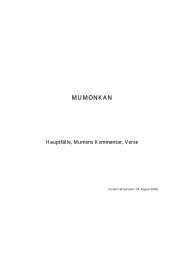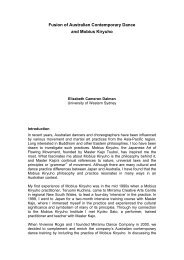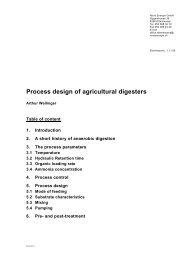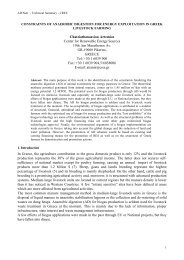III. No-Till Farming Systems - nifty
III. No-Till Farming Systems - nifty
III. No-Till Farming Systems - nifty
Create successful ePaper yourself
Turn your PDF publications into a flip-book with our unique Google optimized e-Paper software.
Sometime within the last century, soil erosion began to exceed new soil formation<br />
in large areas. Perhaps a third or more of all cropland is losing topsoil<br />
faster than new soil is forming, thereby reducing the land’s inherent productivity.<br />
Today the foundation of civilization is crumbling. The seeds of collapse of some<br />
early civilizations, such as the Mayans, may have originated in soil erosion that<br />
undermined the food supply.<br />
The accelerating soil erosion over the last century can be seen in the dust<br />
bowls that form as vegetation is destroyed and wind erosion soars out of control.<br />
Among those that stand out are the Dust Bowl in the U.S. Great Plains during the<br />
1930s, the dust bowls in the Soviet Virgin Lands in the 1960s, the huge one that<br />
is forming today in northwest China, and the one taking shape in the Sahelian region<br />
of Africa.<br />
Each of these is associated with a familiar pattern of overgrazing, deforestation,<br />
and agricultural expansion onto marginal land, followed by retrenchment as<br />
the soil begins to disappear.<br />
Twentieth-century population growth pushed agriculture onto highly vulnerable<br />
land in many countries. The overplowing of the U.S. Great Plains during the<br />
late nineteenth and early twentieth centuries, for example, led to the 1930s Dust<br />
Bowl. This was a tragic era in U.S. history, one that forced hundreds of thousands<br />
of farm families to leave the Great Plains. Many migrated to California in search<br />
of a new life, a move immortalized in John Steinbeck’s “The Grapes of Wrath”.<br />
Three decades later, history repeated itself in the Soviet Union. The Virgin<br />
Lands Project between 1954 and 1960 centered on plowing an area of grassland<br />
for wheat that was larger than the wheatland in Canada and Australia combined.<br />
Initially this resulted in an impressive expansion in Soviet grain production, but<br />
the success was short-lived as a dust bowl developed there as well.<br />
Dust storms originating in the new dust bowls are now faithfully recorded in<br />
satellite images. In early January 2005, the National Aeronautics and Space Administration<br />
(NASA) released images of a vast dust storm moving westward out<br />
of central Africa. This vast cloud of tan-colored dust stretched over some 5,300<br />
kilometers (roughly 3,300 miles). NASA noted that if the storm were relocated to<br />
the United States, it would cover the country and extend into the oceans on both<br />
coasts.<br />
Andrew Goudie, Professor of Geography at Oxford University, reports that<br />
Saharan dust storms—once rare—are now commonplace. He estimates they have<br />
increased 10-fold during the last half-century. Among the countries in the region<br />
most affected by topsoil loss from wind erosion are Niger, Chad, Mauritania,<br />
northern Nigeria, and Burkino Faso. In Mauritania, in Africa’s far west, the number<br />
of dust storms jumped from 2 a year in the early 1960s to 80 a year today.<br />
The Bodélé Depression in Chad is the source of an estimated 1.3 billion tons of<br />
wind-borne soil a year, up 10-fold from 1947 when measurements began. The 2<br />
to 3 billion tons of fine soil particles that leave Africa each year in dust storms are<br />
4














